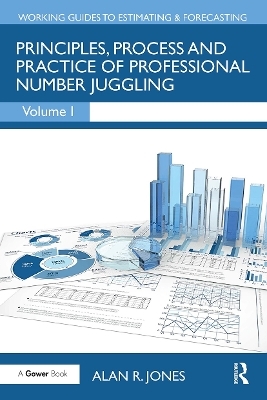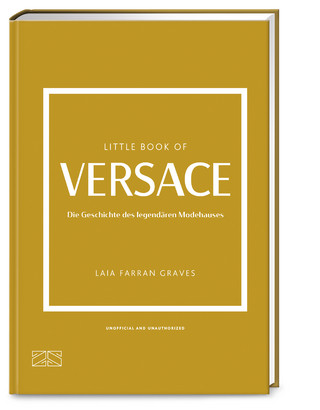
Principles, Process and Practice of Professional Number Juggling
Routledge (Verlag)
978-1-032-83878-6 (ISBN)
Principles, Process and Practice of Professional Number Juggling (Volume 1 of the Working Guides to Estimating & Forecasting series) sets the scene of TRACEability and good estimate practice that is followed in the other volumes in this series of five working guides. It clarifies the difference between an Estimating Process, Procedure, Approach, Method and Technique. It expands on these definitions of Approach (Top-down, Bottom-up and
‘Ethereal’) and Method (Analogy, Parametric and ‘Trusted Source’) and discusses how these form the basis of all other means of establishing an estimate.
This volume also underlines the importance of ‘data normalisation’ in any estimating procedure, and demonstrates that the Estimating by Analogy Method, in essence, is a simple extension of Data Normalisation. The author looks at simple measures of assessing the maturity or health of an estimate, and offers a means of assessing a spreadsheet for any inherent risks or errors that may be introduced by failing to follow good practice in spreadsheet design and build.
This book provides a taster of the more numerical techniques covered in the remainder of the series by considering how an estimator can potentially exploit Benford’s Law (traditionally used in Fraud Detection) to identify systematic bias from third party contributors. It will be a valuable resource for estimators, engineers, accountants, project risk specialists as well as students of cost engineering.
Alan R. Jones is Principal Consultant at Estimata Limited, an estimating consultancy service. He is a Certified Cost Estimator/Analyst (US) and Certified Cost Engineer (CCE) (UK). Prior to setting up his own business, he has enjoyed a 40-year career in the UK aerospace and defence industry as an estimator, culminating in the role of Chief Estimator at BAE Systems. Alan is a Fellow of the Association of Cost Engineers and a Member of the International Cost Estimating and Analysis Association. Historically (some four decades ago), Alan was a graduate in Mathematics from Imperial College of Science and Technology in London, and was an MBA Prize-winner at the Henley Management College (… that was slightly more recent, being only two decades ago). Oh, how time flies when you are enjoying yourself.
List of Figures
List of Tables
Foreword
Introduction and objectives
Why write this book? Who might find it useful? Why five volumes?
Why write this series? Who might find it useful?
Why five volumes?
Features you’ll find in this book and others in this series
Chapter context
The lighter side (humour)
Quotations
Definitions
Discussions and explanations with a mathematical
slant for Formula-philes
Discussions and explanations without a mathematical
slant for Formula-phobes
Caveat augur
Worked examples
Useful Microsoft Excel functions and facilities
References to authoritative sources
Chapter reviews
Overview of chapters in this volume
Elsewhere in the ‘Working Guide to Estimating & Forecasting’ series
Volume I: Principles, Process and Practice of Professional
Number Juggling
Volume II: Probability, Statistics and Other Frightening Stuff
Volume III: Best Fit Lines and Curves, and
Some Mathe-Magical Transformations
Volume IV: Learning, Unlearning and Re-Learning Curves
Volume V: Risk, Opportunity, Uncertainty and Other Random Models
1.5 Final thoughts and musings on this volume and series
References
2
Methods, approaches, techniques and related terms
2.1 What is the difference between a method, approach and technique?
2.2 Estimating Process
2.3 Estimating Approaches
2.3.1 Top-down Approach
2.3.2 Bottom-up Approach
2.3.3 Ethereal Approach
2.4 Estimating Methods
2.4.1 Analogical or Analogous Method
2.4.2 Parametric Method
2.4.3 ‘Trusted Source’ Method
2.4.4 Methods that are arguably not methods (in their own right)
2.5 Estimating Techniques
2.6 Estimating Procedures
Combining Approaches and Methods
Choice of Estimating Approach for a chosen Estimating Element
2.7.2 Choice of Estimating Method for a chosen
Estimating Approach
2.7.3 Choice of Estimating Technique for a chosen
Estimating Method
2.8 Chapter review
References
3
Estimate TRACEability and health checks
3.1 Basis of Estimate,TRACEability and estimate maturity
3.1.1 Building bridges between two estimates
3.2 Estimate and Schedule Maturity Assessments (or health checks)
3.2.1 Estimate Maturity Assessment (EMA)
3.2.2 Schedule Maturity Assessment (SMA)
3.2.3 Cost and Schedule Integration Maturity Assessment (CASIMA)
3.3 Good Practice Spreadsheet Modelling (GPSM)
3.3.1 Level of documentation (T, M)
3.3.2 No hidden worksheets, columns or rows (T, M)
Colour coded cells and worksheet tabs (U, S)
Locked calculation cells and protected worksheets
and workbooks (S)
No hard-coded constants unless axiomatic (M)
Left to Right and Top to Bottom readability flow (U)
Avoid data generated by macros … Unless there is a
genuine benefit (S,T)
Avoid Array Formulae (T, U, M)
Avoid dynamic links to external data (S)
Use Named Ranges for frequently used table arrays (M, U)
Use full syntax within Excel (M)
Break complex calculations into smaller simpler steps (T, M)
Column and row alignment across worksheets (T)
Unambiguous units of measure (U)
Input data validation (U)
Independent model verification and validation (S)
Inherent Risk in Spreadsheets (IRiS)
Chapter review
References
Primary and Secondary Drivers; Accuracy and precision
Thank goodness for Juran and Pareto
What’s the drive behind the Drivers?
Primary Drivers
Internal and external Drivers
Secondary Drivers
Practical issues with Drivers
Sub-classification of Primary Drivers
Avoid pseudo-drivers
Things are rarely black or white
Accuracy and precision of Primary and Secondary Drivers
Accuracy, precision and Drivers – A Pareto perspective
Cone of Uncertainty
3-Point Estimates as a measure of relative accuracy
and uncertainty
Precision as an expression of appropriate or inappropriate exactness
Chapter review
References
Factors, Rates, Ratios and estimating by analogy
Estimating Metrics
Where to use them
The views of others
5.1.3 Underlying Linear Relationship
5.2 Rates
5.3 Factors
5.4 Ratios
5.5 Dealing with multiple Rates, Factors (and Ratios)
5.5.1 Anomalous analogies
5.5.2 Analogies with an additive model
5.5.3 Analogies with a multiplicative model
5.6 Sensitivity Analysis on Factors, Rates and Ratios
Choosing a Sensitivity Range quantitatively
Choosing a Sensitivity Range around a measure of Central Tendency
The triangulation option
Choosing a Sensitivity Range around a High-end or Low-end Metric
5.6.5 Choosing a Sensitivity Range when all else fails
5.7 Chapter review
References
6
Data normalisation – Levelling the playing field
6.1 Classification of data sources – Primary, Secondary and Tertiary Data
6.1.1 Primary Data
6.1.2 Secondary Data
6.1.3 Tertiary Data
6.1.4 Quarantined Data
6.2 Types of normalisation Methods and Techniques
6.3 Normalisation can be a multi-dimensional problem
Error related
Volume, quantity or throughput related – Economies of Scale
6.3.3 Scale conversion – Fixed and Variable Factors
6.3.4 Date or time related
6.3.5 Life Cycle related
6.3.6 Key groupings – Role related
6.3.7 Scope related (subjective)
6.3.8 Complexity – Judgement related (subjective)
6.4 The estimator as a time traveller
6.4.1 Use of time-based indices ‘Now and Then’
6.4.2 Time-based Weighted Indices
6.4.3 Time-based Chain-linked Weighted Indices
The doubling rule for escalation
Composite Index: Is that not just a Weighted Index by another name?
Using the appropriate appropriation approach
Use of time as an indicator of other changes
Discounted Cash Flow – Normalising
investment opportunities
Discounted Cash Flow – A form of time travel for accountants
Net Present Value (NPV)
Internal Rate of Return (IRR)
Payback Period
Strengths and weaknesses of different DCF techniques
Special types of formulaic normalisation techniques
Layering of normalisation for differences in analogies
Chapter review
References
Pseudo-quantitative qualitative estimating techniques
Delphi Technique
Driver Cross-Impact Analysis
A brief word or two about solution optimisation
Chapter review
References
Benford’s Law as a potential measure of cost bias
Scale Invariance of Benford’s Law
Potential use of Benford’s Law in estimating
Chapter review
References
Glossary of estimating and forecasting terms
Legend for Microsoft Excel Worked Example Tables in Greyscale
Index
| Erscheinungsdatum | 23.08.2024 |
|---|---|
| Reihe/Serie | Working Guides to Estimating & Forecasting |
| Verlagsort | London |
| Sprache | englisch |
| Maße | 156 x 234 mm |
| Gewicht | 390 g |
| Themenwelt | Kunst / Musik / Theater ► Design / Innenarchitektur / Mode |
| Wirtschaft ► Volkswirtschaftslehre | |
| ISBN-10 | 1-032-83878-7 / 1032838787 |
| ISBN-13 | 978-1-032-83878-6 / 9781032838786 |
| Zustand | Neuware |
| Haben Sie eine Frage zum Produkt? |
aus dem Bereich


